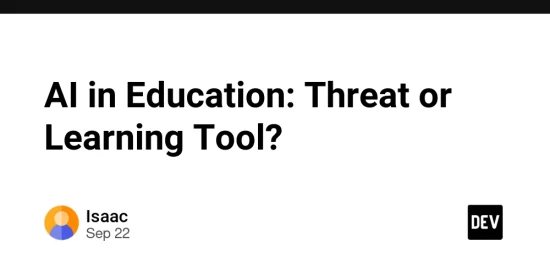Every few months, a new wave of concern sweeps through schools: students are “cheating” with AI. Detection tools pop up, policies tighten, and essays are scrutinized. But maybe we’re asking the wrong question. Instead of worrying about how to stop AI, should we be asking how to use it to help students learn?
Rethinking Assignments
Our traditional homework model (write an essay, turn it in, get a grade) doesn’t make much sense in an AI era. Arguably, it never really did. Schools often seem designed to measure performance rather than nurture learning. What is the real goal of schools? Is it knowledge? Or preparation for life and work? Either way, assignments should reflect that goal, and for years they haven’t.
Part of education should be learning to use the tools we already have at our disposal, such as search engines, calculators, translators, and of course, AI.
Teaching Responsible Use
Banning a tool like AI should not be the way we handle this conundrum. Not only are AI detection tools unreliable, but why should students be kept away from a tool that companies are already embracing? If businesses are moving forward, does it make sense for schools to move backward?
Education has faced this kind of disruption before. Calculators, spell checkers, search engines, and translators all caused panic when they first appeared. The counterargument is fair: those tools do not generate original content, while AI does. Still, each of them was eventually integrated into learning, and people adapted.
The real question is not whether students will use AI, but whether they will learn to use it well. The key is to teach ethical and responsible practices, not pretend the technology does not exist.
The Value of Struggling
Research shows that struggling through challenges deepens learning. But here is the catch: when struggling risks failing a class, delaying graduation, or paying extra tuition, students are more likely to play it safe by cutting corners. The system itself can push them toward shortcuts.
Instead of framing AI as cheating, schools could use it as a way to balance productive struggle with support. Imagine a model where students are required to use ChatGPT (or any other AI model) for part of an assignment, and then must defend or expand on that work in class through oral exams, discussions, or practical projects. That way, they practice both using AI effectively and thinking independently.
This is not about replacing learning; it is about learning how to learn with AI. And perhaps most importantly, it encourages students to ask better questions and be more curious.
Uncertain Future
No one knows exactly what AI will look like, or what jobs will exist, in 3, 5, or 10 years. That uncertainty makes it even more important to teach adaptability, ethics, and critical thinking. Prohibition will not prepare students for a world where AI is already everywhere.
AI in education is not a yes-or-no question. Banning it may feel safer, but it misses the opportunity to prepare students for reality. The better path is teaching students to use AI thoughtfully and responsibly, just as we have done with other tools.
At the end of the day, the goal of education is not simply to stop “cheating.” If education is truly about preparing students for life, then learning to navigate AI responsibly might be one of the most important lessons of all.
References
Lee, V. R. (2025, September 4). I study AI cheating. Here’s what the data actually says. Vox. https://www.vox.com/technology/458875/ai-cheating-data-education-panic
Vox. (2023, December 12). AI can do your homework. Now what? [Video]. YouTube. https://www.youtube.com/watch?v=bEJ0_TVXh-I





